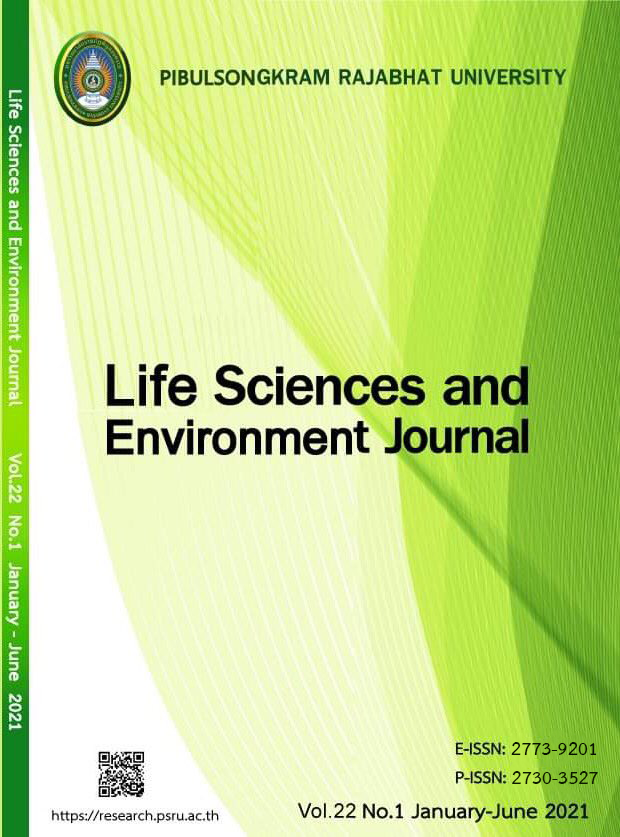BETWEEN SCIENCE AND SPECTACLE: RECONSTRUCTING KAREN PADAUNG WOMEN’S MIGRATION EXPERIENCES AND THEIR LIVES IN NORTHERN THAILAND
Keywords:
Thailand, Karen Padaung Women, Labor, GenderAbstract
In Thailand, Karen Padaung women (KPW) perform in ethnological expositions before a public avid for entertainment. Despite a breadth of scholarship that demonstrates the complex embeddedness of tribal knowledge and practices, there has been very little analysis of KPW’s perspectives on their im/mobility, and minimal effort to elucidate their legal precarity. Having this in the background, the article explores the biographies of 20 KPW with an age ≥ of 18 years. Data were collected through semi-structured interviews, between 2019-2020. Discussions explored vulnerabilities to exploitation, as well as emotions, and social values around which KPW’s attitudes to labor were formed. Audio recordings were transcribed verbatim, uploaded in NVivo QDAS, and studied via a hermeneutic phenomenological research method. On the one hand, outcomes suggest that in Thailand, there are fairs where the main objects on display are real people, and where available protection for rights is extremely volatile. On the other hand, they show that such sites offer destitute households a paid opportunity to retain traditional customs. The paper ends by stressing that the challenges are numerous, albeit not inevitable. Future studies should look at how KPW can resist being pigeon-holed into a condition of social nakedness. Besides, they need to assess the strategies adopted by Thailand to deploy essentialist rhetoric about a homogeneous national community to regiment historically heterogeneous populations.
References
Agamben G. Homo sacer. Torino: Einaudi; 1995.
Bert W. Burma, China, and the U.S.A. Pacific Affairs 2004;77(2):263-282.
Bhruksasri W. Government policy: Highland ethnic minorities. In J. McKinnon & B. Vienne (Eds.), Hill tribes today: Problems in change Bangkok: White Lotus-Orstom; 1989. 5-31.
Bloch M. Situated learning: Legitimate peripheral participation. Man 1994;29(2):487-489.
Cohen E. Ethnic tourism in mainland Southeast Asia: The state of the art. Tourism Recreation Research 2016;41(3):232-245.
Dannecker P, Schaffar W. The Thai-Burmese borderland: mobilities, regimes, actors and changing political contexts. Asian Anthropology 2016;15(2):132-151.
De Genova NP. Migrant “illegality” and deportability in everyday life. Annual Review of Anthropology 2002;31(1):419-447.
Eyben R. Power, mutual accountability and responsibility in the practice of international aid: A relational approach. Brighton: Institute of Development Studies; 2008.
Heikkilä-Horn ML. From “giraffe women” to “long-necked karen”. kayan women’s journey to agency in the thai-myanmar borderlands. Religiski-Filozofiski Raksti 2019;26(2):224-243.
Heuer, W. Europe and its refugees: Arendt on the politicization of minorities. Social Research: An International Quarterly 2007:74(4):1159-1172.
Horstmann A. Sacred spaces of Karen refugees and humanitarian aid across the Thailand-Burma border. Austrian Journal of South-East Asian Studies 2011;4(2):254-272.
Ishii K. The impact of ethnic tourism on hill tribes in Thailand. Annals of Tourism Research2012;39(1): 290-310.
Jackson P. Principles and problems of participant observation. Geografiska Annaler 1983;65(1):39-46.
Kafle NP. Hermeneutic phenomenological research method simplified. Bodhi: An Interdisciplinary Journal 2013;5(1):181-199.
Kaiser P, Benner MT, Pohlmann K. Religious belief as a resilience factor in a long-term refugee setting at the Thai-Myanmar Border, Southeast Asia: Religiöser Glaube als Resilienzfaktor in Langzeitflüchtlingslagern an der Grenze zwischen Thailand und Myanmar. Spiritual Care2020;9(3-4):321-330.
Kuroiwa Y, Verkuyten M. Narratives and the constitution of a common identity: The Karen in Burma. Identities: Global Studies in Culture and Power2008;15(4):391-412.
Laungaramsi P. Recrafting Citizenship: Cards, Colors and the Politic of Identification in Thailand”. Harvard-Yenching Institute Working Paper Series. Cambridge: Harvard-Yenching Institute; 2015.
Lee TL. Statelessness, human rights and gender: Irregular migrant workers from Burma in Thailand. Leiden: Brill Nijhoff; 2005.
Leiter K, Suwanvanichkij V, Tamm I. et al. Human rights abuses and vulnerability to HIV/AIDS: the experiences of Burmese women in Thailand. Health and human rights 2006;(11):88-111.
Lindseth A, Norberg A. A phenomenological hermeneutical method for researching lived experience. Scandinavian Journal of Caring Sciences 2004;18(2):145-153.
Loos T. Subject Siam: Family, law, and colonial modernity in Thailand. New York: Cornell University Press; 2018.
Malkki L. National geographic: The rooting of peoples and the territorialization of national identity among scholars and refugees. Cultural anthropology 1992;7(1):24-44.
Marshall TH. Citizenship and Social Class, Cambridge: Cambridge University Press; 1950.
Maykut PM, Morehouse R. Beginning qualitative research: A philosophic and practical guide. London: The Falmer Press; 1994.
Mirante ET. Burmese looking glass: a human rights adventure and a jungle revolution. New York: Atlantic Monthly Press; 1994.
Mon M. Burmese labour migration into Thailand: governance of migration and labour rights. Journal of the Asia Pacific Economy 2010;15(1):33-44.
Nicoletti M. The zoo of the giraffe women: a journey among the Kayan of Northern Thailand. Kathmandu: Vajra Publications; 2013.
Oh SA. Van Der Stouwe, M. Education, diversity, and inclusion in Burmese refugee camps in Thailand. Comparative Education Review 2008;52(4):589-617.
Pearson DR, Kusakabe K. Thailand's hidden workforce: Burmese migrant women factory workers. London: Zed Books Ltd; 2012.
Ricoeur, P. Interpretation theory: Discourse and the surplus of meaning. Fort Worth: TCU press; 1976.
Sigona N. Everyday statelessness in Italy: status, rights, and camps. Ethnic and Racial Studies 2016; 39(2):263-279.
South A. The politics of protection in Burma: Beyond the humanitarian mainstream. Critical Asian Studies 2012;44:175-204.
Supadhiloke B. Citizen Journalism: empowering stateless thais as citizens. Thammasat Review 2014;17(1):1-28.
Suryadinata L, Beng TC. Ethnic Chinese in Southeast Asia: Overseas Chinese, Chinese Overseas or Southeast Asians? In Ethnic Chinese as Southeast Asians New York: Palgrave Macmillan 1997;(10):1-32.
Theurer J. Trapped in their own rings: Padaung women and their fight for traditional freedom. International Journal of Gender and Women’s Studies 2014;2(4):51-67.
Turner S. What Is a Refugee Camp? Explorations of the limits and effects of the camp. Journal of Refugee Studies 2015;29(2):139-148.
Vandergeest P. Constructing Thailand: regulation, everyday resistance, and citizenship. Comparative Studies in Society and History 1993;35(1):133-158.
Vink MP, Bauböck R. Citizenship configurations: Analysing the multiple purposes of citizenship regimes in Europe. Comparative European Politics 2013;11(5):621-648.
Walker A. The'Karen consensus', ethnic politics and resource-use legitimacy in northern Thailand. Asian Ethnicity 2001;2(2):145-162.
Zolberg VL. Contested remembrance: the Hiroshima exhibit controversy. Theory and Society 1988;27(4):565-590.
Downloads
Published
How to Cite
Issue
Section
License
Each article is copyrighted © by its author(s) and is published under license from the author(s).










